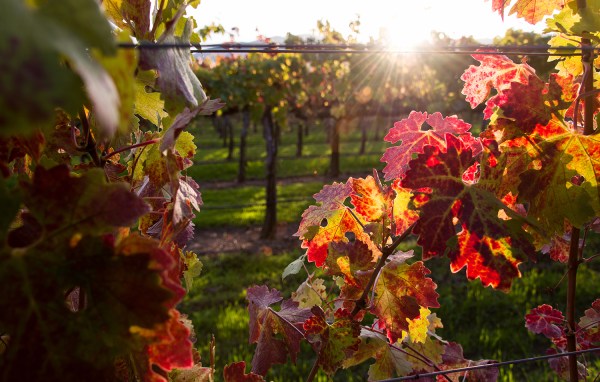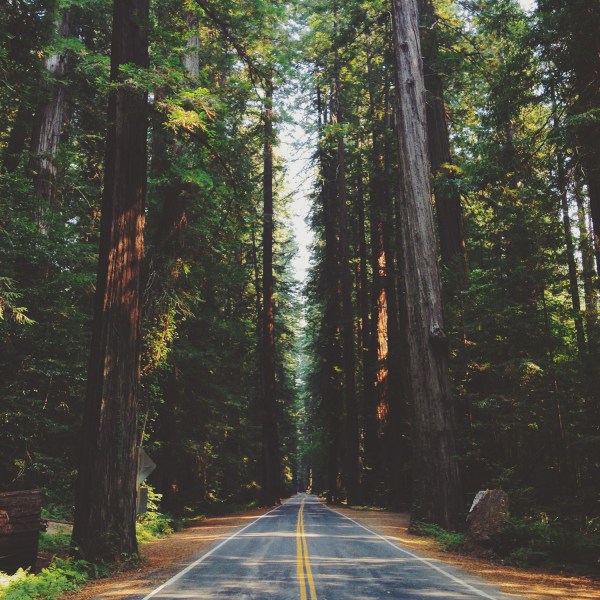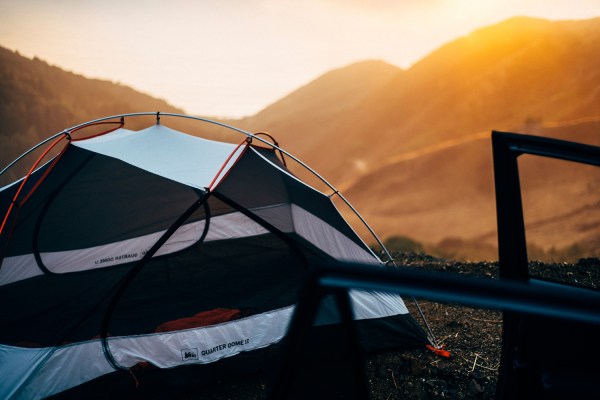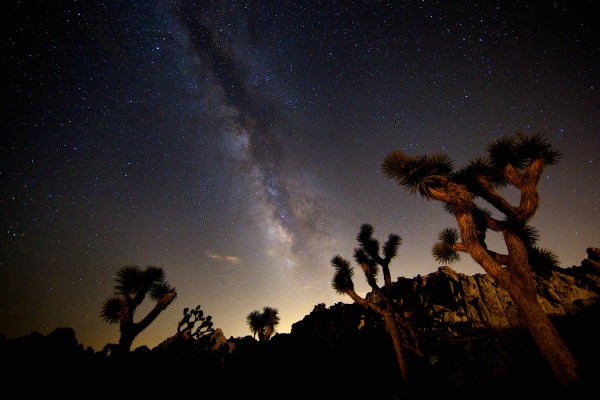As daylight slowly begins to wane and evening temperatures become fleece-and-warm-thermos worthy, the California wilderness is at its absolute best.
For both cold-weather camping connoisseurs and south-migrating heat-seekers alike, California’s diverse natural landscape caters to the camping needs of all types of adventurers. What better way to welcome in the changing temperatures than by spending a night snuggled beneath the stars next to a cozy campfire? With so many great choices, it can be a bit overwhelming to decide where to begin. Luckily, we at Hipcamp have put together a list with some of our favorite picks, so you can put the wheels in motion and start planning your own fall or winter camping excursion.
Bothe–Napa Valley State Park: Bothe Campground
Area Overview
Take a deep breath and let your senses be bedazzled as you savor the sweetly intoxicating aromas of the fall harvest. Not only will the full-bodied fumes of cabernet sauvignon, pinot noir and merlot leave you feeling light on your feet, but so too will the golden hues of the sunlit autumn fields, which stretch out across the horizon. There is no better time of year to visit California’s famous wine country.

Photo credit: John Krzesinski
Campground
The campground itself has 50 sites and more than 10 miles of hiking trails, which weave among oaks, redwoods, maples and madrones. Ritchey Creek flows nearby and is a peaceful spot for an afternoon picnic. For a different experience, reserve one of the 10 new 21-foot-diameter yurts located on the premises, each complete with a queen-size mattress (bring your own sleeping bags or bedding!), table and chairs. Only a stone’s throw away is Napa, where you’ll want to sample some of the local vintages. And don’t forget to bring a wine bottle opener!
Big Basin Redwoods State Park: Wastahi Campground
Area Overview
Humbling and awe-inspiring are two of the first words that come to mind while wandering this rural metropolis of natural skyscrapers, otherwise referred to as ancient coastal redwoods. Big Basin boasts the largest contiguous stand of these giants south of San Francisco. The tallest, known as Mother of the Forest, seems to beckon you towards her 329 feet of immensity with a magnetic force. Big Basin is also known for its lush canyons carved out by the park’s many waterfalls that flow mostly year-round. Freshwater marshes, chaparral-covered slopes, sandy beaches and sunny ridges give California’s oldest state park a beauty that is as diverse as it is abundant. Thanks to diminished fall crowds, the vastness of this park can be taken in much more thoughtfully and thoroughly during the cooler season.

Photo credit: Julian Bialowas
Campground
With some sites affectionately referred to as ”honeymoon suites“ (campsites 86 & 97), Wastahi Campground is the perfect little nook for a late-season private getaway. You’ll have to book early in advance for the two more-private sites, but the 25 other less-remote campsites are still great for their close proximity to the Sequoia Trail that runs directly through the campground and into the park. If you’re in the mood for something a bit more challenging, check out the nearby 29-mile, three-day Skyline to the Sea Trail, which will bring you from the Santa Cruz Mountains all the way to the Pacific Ocean—but not back again, so be sure to plan your parking accordingly.
Los Padres National Forest, Big Sur: Andrew Molera Campground
Area Overview
Welcome to the kingdom of the conifers, where dense forests of old-growth coastal redwood, Jeffrey pine, white fir and Douglas spruce reign king. This 90-mile stitch embroidered on California’s sun-streaked coast and stretching inland to the northern contingent of the Los Padres National Forest is known in its entirety as Big Sur. Derived from the Spanish, ”el sur grande,“ meaning ”the big south,” this region’s vegetation makes every effort to live up to its name. Known as well for its extensive biodiversity, this area is home to many species of fauna and flora, some of which, the California condor for example, are rare or endangered. Big Sur’s coastline is filled with a rich aquatic ecology as well, and is home to a marine reserve and two adjoining marine conservation areas. Don’t worry, anglers, for not all hope is lost. Salmon and albacore fishing are still permitted both commercially and recreationally and are particularly bountiful in the colder months.

Photo credit: Julian Bialowas
Campground
Mountains or beach? The age-old philosophical debate has continually perplexed the likes of Aristotle, Plato, Confucius and John Locke for centuries. Thank goodness for Andrew Molera Trail Campground, which offers easy access to both. Tired from a day long day of hiking the 8.8-mile Andrew Molera Loop? Better drink something heavily caffeinated because the few remaining hours of precious surfer sunlight are fading fast. As you and your board glide smoothly through the silky waves, casting a soft silhouette against a pastel-colored dusk canvas, you’ll know you made the right decision. Back at the campground, you can lounge at any of the 24 sites and enjoy s’mores by the fire after a day of stunning sights and personal fulfilment. The early bird gets the secluded worm at this campground, where first-arrivers can grab one of the more private spots (sites 1-4).
Joshua Tree National Park: Jumbo Rocks Campground
Area Overview
Twisting and contorting its branches toward the sky, like the mythical Greek Hydra striking a sun salutation yoga pose, the Joshua tree imposes its splendor on an expansive desert backdrop. These impressive wooded specimens lend their namesake to the park in which they reside. The park itself encompasses an area slightly larger than the size of Rhode Island and includes three varied ecosystems: the higher Mojave Desert, lower Colorado Desert and San Bernardino Mountains. Stealing much of the Joshua trees’ thunder, however, are the massive volcanic rock formations known as inselbergs that attract climbers year-round. The most famous of these formations are Old Woman Rock, North Horror Rock, Skull Rock and Giant Marbles. This park is much more suitable for visits in winter, when daytime temperatures are more hospitable to human life forms.

Photo credit: Chao Yen
Campground
Some might say it’s here you’ll find the best Milky Way views and stargazing in all of California—and we’re not talking candy bars or celebrities. From a rocky perch at Jumbo Rocks Campground, far removed from the bright lights of Los Angeles, you’ll revel in stunning night skies. Bring a pair of binoculars to get a more close-up view of the myriad celestial spheres that compose the intricate wonders of our galaxy. Back on solid ground, this campground offers trails that weave and wander among the beastly boulders. Bring along an extra blanket or two, because the temperature variance can be as different as day and night—literally.
Death Valley National Park: Mahogany Flat Campground
Area Overview
Got a thirst for the extreme that needs to be quenched? You’ve come to the right place. Death Valley is not only the largest national park in the Lower 48, but also the hottest and driest—so be sure to bring plenty of aqua. The saving grace for most visitors is that Mother Nature’s burning summer rage is replaced by a much more mild-tempered demeanor in the fall and winter. As you traverse this drastically changing landscape, you’ll witness the transformation from saltpan lows at 282 feet below sea level to mountain summits such as Telescope Peak at 11,049 feet. You’ll also observe a wide diversity of plant life, such as desert holly and mesquite trees at lower elevations and blackbrush, shadescale and bristlecone pine in the upper woodlands. Make sure to stop by favorites such as Dante’s View and Wildrose for breathtaking panoramic views.

Photo credit: Julian Bialowas
Camping
Not afraid to get a little mud on the tires? Then this spot is just for you, as you’ll go over the river and through the woods and then up a mountain to get to this 8,133-foot outcropping cinched tight by the juniper belt of the Panamint Range. Should your car not have the gusto to make the final ascent to Mahogany, Thorndike Campground is another option with similar alpine terrain located slightly lower on the mountain. These sites have no potable water, so you will be responsible for providing your own life-sustaining liquids. For especially small cars or large RV-type vehicles, we suggest Wildrose Campground at 4,100 feet, which is where the pavement stops and the dirt road begins. While Mahogany and Thorndike are fantastic in the fall, Wildrose is also your best winter option beginning in December, when the higher campgrounds are closed due to snow. Yes, snow. Pack carefully and appropriately, as you may need clothing to endure anything from desert heat waves to frozen tundra.
Other Fall & Winter Suggestions
- Mojave National Preserve: Mid Hills Campground
- Point Mugu State Park: Sycamore Canyon Beach Campground
- Redwoods State Park: Jedediah Smith Campground
- Sequoia and Kings Canyon National Parks: Potwisha Campground
- Mount Tamalpais State Park: Pantoll Campground
